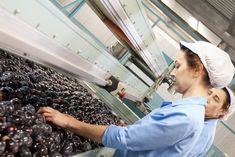
Plum production in the Spanish region of Extremadura is set to be drop by 60 per cent this year, after rain during the flowering season, according to fruit exporters’ association Afruex.
But this does not mean that there will be shortages of Extremaduran plums as there are enough mid-season varieties to cover the market, says Manuel Rosa, owner of Explotaciones Agricolas Rosa.
“There was a bumper crop last year which means that the drop in production this year is more noticeable,” said Miguel ángel Gómez of Afruex. “The main reason for the dip is that rain during the pollination season prevented the fruit from setting, as the pollen was washed away.”
But Extremaduran plum production has averaged an annual increase of 22 per cent, and exports have increased rapidly over recent years, according to Rosa.
He said that the weather in the region produces high quality fruit. “The good weather starts early in the year, and this means that while other sources are still on their first variety, we have moved onto our second, which is always better than the first,” he said. “This means that we are always two weeks ahead of the market, and this puts us in a strong position.”
Rosa said that the sunlight hours in Extremadura are the longest in Europe, and produces sweet fruit with a good colour, which is ideal for the UK market.
The main export markets for Extremaduran plums are the UK, closely followed by Germany and the rest of Europe. Tesco, Asda, Morrisons, Sainsbury’s and Mark’s & Spencer all stock plums from Extremadura at some time in the season.
The varieties include the Red Beauty in May, the Pioneer, Black Beauty, Black Amber and Black Star in June and July, and the Fortune and Villa Rosa in August.



